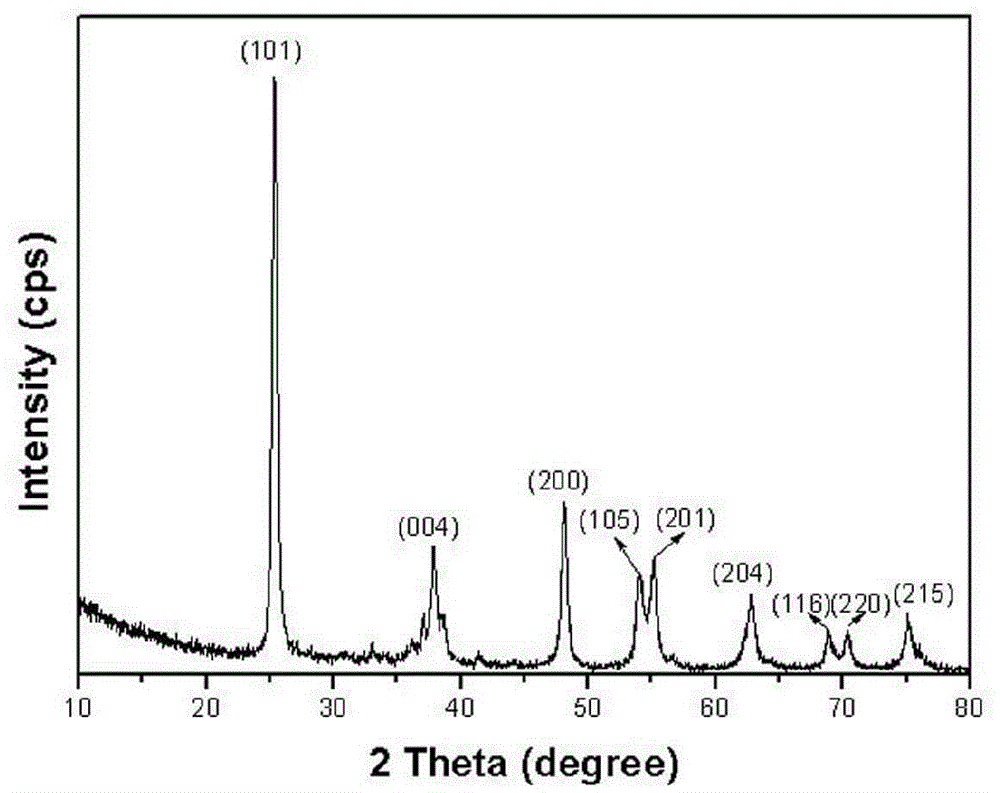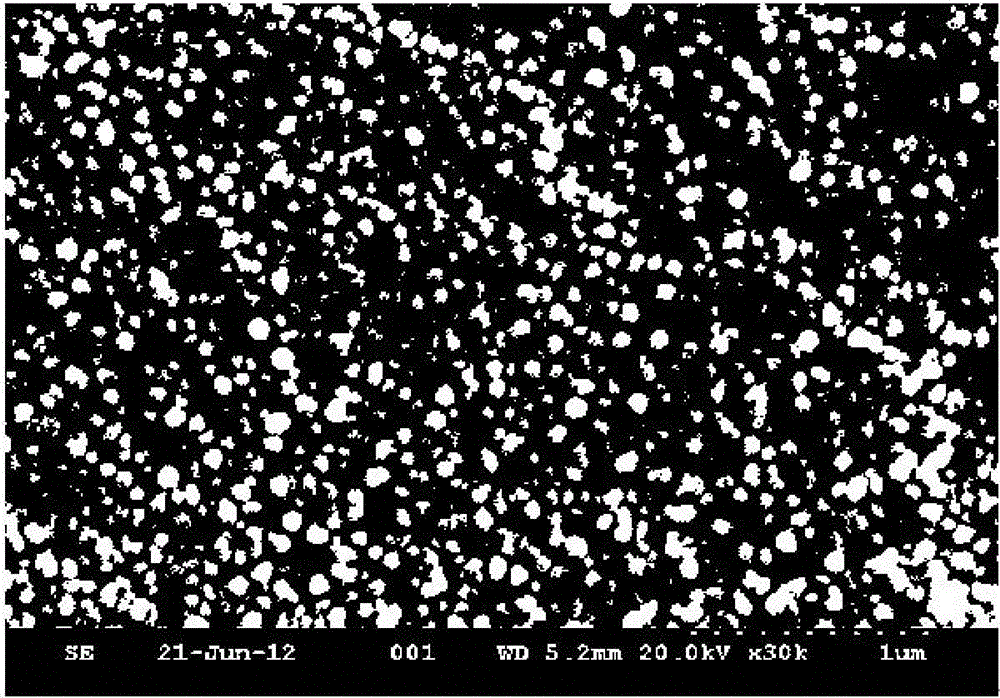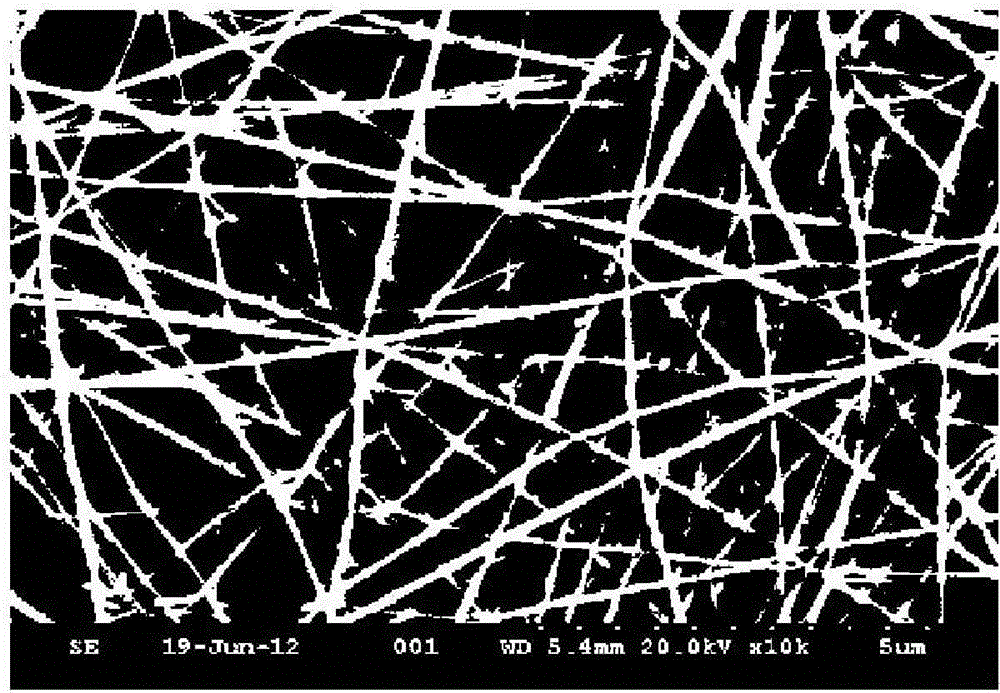Method for preparing nano-titanium dioxide photocatalysis transparent glass coating by electrospinning technology
A technology of nano-titanium dioxide and electrospinning technology is applied in the field of manufacturing self-cleaning transparent glass coatings, which can solve the problems of high equipment investment, impossible to put into use in a large area, and complicated preparation process steps.
- Summary
- Abstract
- Description
- Claims
- Application Information
AI Technical Summary
Problems solved by technology
Method used
Image
Examples
Embodiment 1
[0033] Prepare a precursor solution containing 0.0wt% DEA, and then use this solution to prepare TiO by electrospinning 2 Glass coating. The specific steps are as follows: First, take 4.0g tetrabutyl titanate, 10.0g acetic acid and 8.0g ethanol in a closed container and stir for about 30min to obtain the first homogeneous sol; in addition, take 1.6g PVP and slowly add 4.0g DMF and 12.0g ethanol solution Stir continuously in the middle for more than 12h until the PVP is completely dissolved to obtain the second sol; mix and stir the above two sols evenly to obtain the precursor solution for electrospinning. Ordinary glass slides were placed in deionized water, acetone, ethanol and isopropanol in sequence and ultrasonically cleaned, and placed at 80 o C is dried for later use. The flat collection device directly below the electrospinning nozzle is wrapped with aluminum foil, and the clean glass substrate is placed on the flat collection device. The distance between t...
Embodiment 2
[0035] Prepare a precursor solution containing 2.0 wt% DEA, and then use this solution to prepare TiO by electrospinning 2 Glass coating. The specific steps are as follows: First, take 4.0g tetrabutyl titanate, 10.0g acetic acid and 8.0g ethanol in a closed container and stir for about 30min to obtain the first homogeneous sol; in addition, take 1.6g PVP and slowly add 4.0g DMF and 12.0g ethanol solution Stir continuously in the medium for more than 12h until the PVP is completely dissolved to obtain the second sol; mix the above two sols and add 2.0 wt% DEA and stir evenly to obtain the precursor solution for electrospinning. Ordinary glass slides were placed in deionized water, acetone, ethanol and isopropanol in sequence and ultrasonically cleaned, and placed at 80 o C is dried for later use. The flat collection device directly below the electrospinning nozzle is wrapped with aluminum foil, and the clean glass substrate is placed on the flat collection device. T...
Embodiment 3
[0037] Prepare a precursor solution containing 4.0 wt% DEA, and then use this solution to prepare TiO by electrospinning 2 Glass coating. The specific steps are as follows: First, take 4.0g tetrabutyl titanate, 10.0g acetic acid and 8.0g ethanol in a closed container and stir for about 30min to obtain the first homogeneous sol; in addition, take 1.6g PVP and slowly add 4.0g DMF and 12.0g ethanol solution Stir continuously in the medium for more than 12h until the PVP is completely dissolved to obtain the second sol; mix the above two sols and add 4.0 wt% DEA and stir evenly to obtain the precursor solution for electrospinning. Ordinary glass slides were placed in deionized water, acetone, ethanol and isopropanol in sequence and ultrasonically cleaned, and placed at 80 o C is dried for later use. The flat collection device directly below the electrospinning nozzle is wrapped with aluminum foil, and the clean glass substrate is placed on the flat collection device. T...
PUM
 Login to View More
Login to View More Abstract
Description
Claims
Application Information
 Login to View More
Login to View More - R&D
- Intellectual Property
- Life Sciences
- Materials
- Tech Scout
- Unparalleled Data Quality
- Higher Quality Content
- 60% Fewer Hallucinations
Browse by: Latest US Patents, China's latest patents, Technical Efficacy Thesaurus, Application Domain, Technology Topic, Popular Technical Reports.
© 2025 PatSnap. All rights reserved.Legal|Privacy policy|Modern Slavery Act Transparency Statement|Sitemap|About US| Contact US: help@patsnap.com



